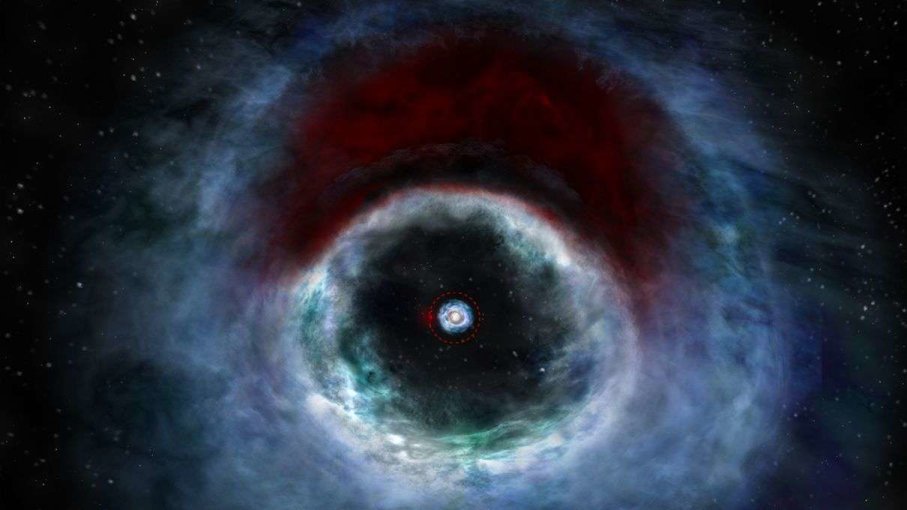Spotted: Early Planetary Formation Around a Binary Star System

The discovery of planets orbiting stars beyond our solar system is coming at a faster rate than ever before, but that makes each new planet found no less thrilling. New images coming in from 450 light-years away may reveal a planet – or a planetary system – beginning to form around a binary star system.
Inset
A composite image of the HD 142527 binary star from data captured by the ALMA radio telescope shows a distinctive arc of dust (red) and a ring of carbon monoxide (blue and green).
ANDREA ISELLA/RICE UNIVERSITY; B. SAXTON/NRAO/AUI/NSF; ALMA/NRAO/ESO/NAOJ
Andrea Isella, an assistant professor of physics and astronomy at Rice University, studies the formation of planets. He analyzed the binary star known as HD 142527, located in the Scorpius-Centaurus cluster of young stars. It’s long been known that the star – actually two stars intrinsically linked – is shrouded in a cloud of planetary potential: a crescent-shaped corona of dust, gas and ice.
Most of the ring around HD 142527 is carbon monoxide gas, but about a third of it – pictured in renderings in red – are dust and ice. The theory is that carbon monoxide molecules in the cloud freeze in the dust, and clump together over millions of years to create a planet.
“The temperature is so low that the gas turns into ice and sticks to the grains,” said Isella. “This is important for planet formation. The solid dust needs to stick together to form a bigger body that will eventually attract more rock and gas gravitationally.”
“If you try to smash rocks together, they don’t stick together very well,” he said. “If you smash snowballs together, they do. So when you form an ice mantle around the grains, you increase their capability to stick together.”
Scientists once believed a binary star system’s environment would be too unstable to support planet, but a number have been discovered over the past decade.
Isella and his team used the new Atacama Large Millimeter/submillimeter Array (ALMA) radio telescope in Chile to detect information invisible to optical telescopes. He delivered his findings at the annual meeting of the American Association for the Advancement of Science.



 Creators of mankind
Creators of mankind Description of “Tall white aliens”
Description of “Tall white aliens” Where they came from?
Where they came from? About hostile civilizations
About hostile civilizations The war for the Earth
The war for the Earth “Tall white aliens” about eternal life
“Tall white aliens” about eternal life Video: “Nordic aliens”
Video: “Nordic aliens” Aliens
Aliens Alien encounters
Alien encounters The aliens base
The aliens base UFO
UFO Technology UFO
Technology UFO Underground civilization
Underground civilization Ancient alien artifacts
Ancient alien artifacts Military and UFO
Military and UFO Mysteries and hypotheses
Mysteries and hypotheses Scientific facts
Scientific facts


















